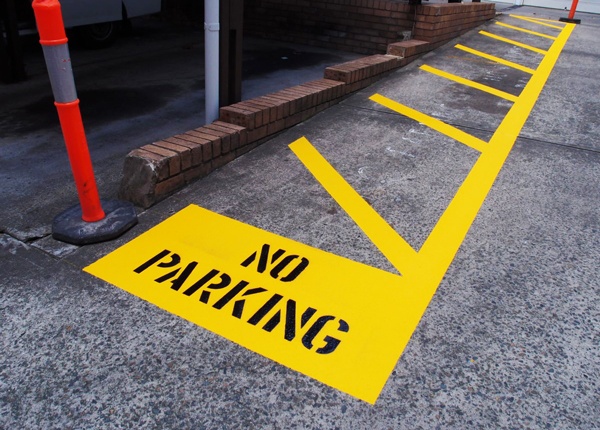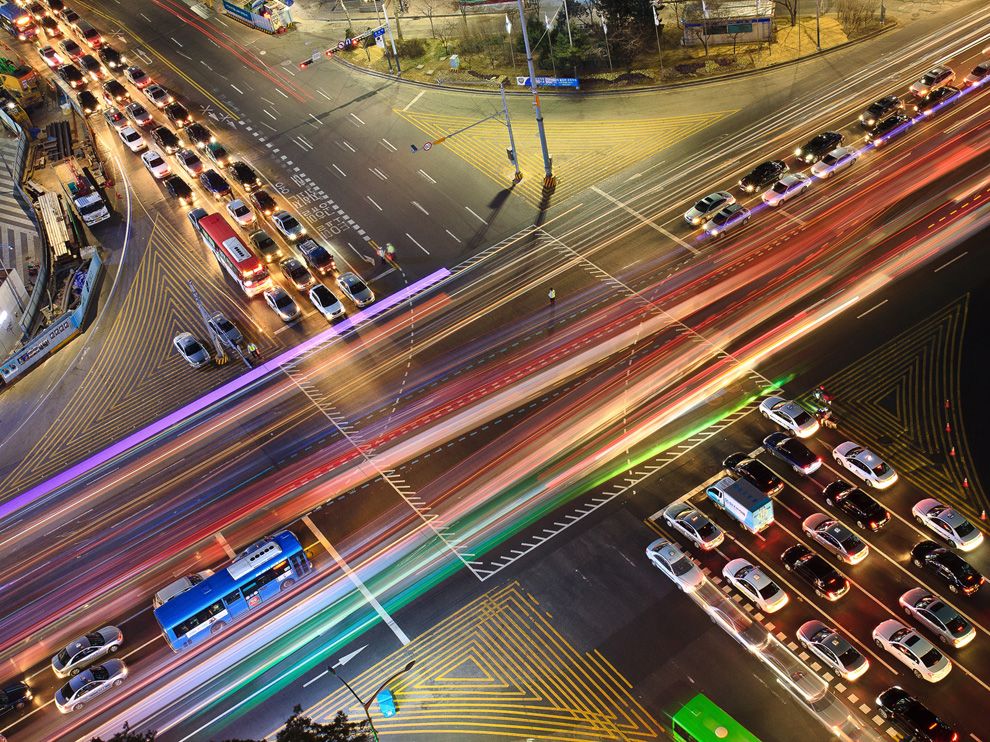
Lettering and Symbols on the Road: Pavement Markings
Updated Oct. 22, 2020Where road markings must impart very specific information, you will often encounter letters, words or symbols painted on the pavement.
Pavement letters and symbols may be used to:
- Describe restrictions in a certain area
- Indicate lane use
- Warn road users about a hazard
Directional arrows
Second only to pavement lines, directional arrows are among the most common road markings used. Some lanes feature directional arrows painted at regular intervals along the middle of the lane. These indicate the direction in which drivers must travel when using this lane; they are usually straight, featuring a single arrow-head.
Reversible lanes can be identified by the double-headed arrow markings painted along their center. These arrows point in both directions, telling motorists that the direction of traffic in this lane may be changed. Always refer to the traffic signals positioned above reversible lanes to find out whether you can currently occupy that lane.
Arrow markings which are curved to the left or right at a 90-degree angle indicate a dedicated turn lane. For instance, curved left-facing arrows are used to mark center left-turn lanes.
Yield markings
Yield markings tell drivers that they must give up the right-of-way to cross traffic. They are often found
at the entrances to traffic circles and roundabouts. When you encounter yield markings, you must reduce your speed and be prepared to stop. There are two, common types of yield marking which are both easy to recognize:
- A broken, horizontal line cutting across the lane.
- A line of triangles with their points facing toward you, extending horizontally across the roadway.
These markings are frequently accompanied by YIELD road signs. Like stop lines, they indicate the point at which motorists must yield.
Stop markings
The word “STOP” (often printed in an octagonal shape resembling a STOP sign) may be painted on the roadway in places where drivers must stop. In most cases, this is also accompanied by a posted regulatory stop sign.
Reserved lane markings
Special-use lanes are often marked with symbols, in addition to double white solid lines. This type of lane is reserved for certain road users, such as high-occupancy vehicles (HOV), buses or cyclists. Very often, reserved lanes are painted with elongated white diamond symbols at regular intervals, to remind motorists that they may not enter the lane.
Shared lane markings or “sharrows”
Shared lane markings - also known as “sharrows” - indicate that drivers and cyclists must share a certain lane. They are usually painted on lanes which are too narrow for cars and bicycles to move safely side-by-side, to remind motorists to watch out for cyclists and to encourage cyclists to use the lane.
Shared lane markings are easy to spot. They include a white bicycle symbol topped with two chevrons pointing in the direction of traffic. Many motorists see the bicycle symbol and mistake these shared lanes for dedicated bicycle lanes – do not make the same error!
Green pavement
You may encounter stretches of green pavement on roadways where conflicts between cyclists and motorists are common. This distinct road color sends a clear message to motorists: drive cautiously and look out for cyclists! Always be extremely careful when crossing green paved areas and check for cyclists in both directions before proceeding. Never stop your vehicle on green pavement.
Cyclists have the same rights as motorists, though they are far more susceptible to harm. Find out about your responsibilities as a driver and learn how to share the road with bicyclists in our dedicated article.
School crossing markings
Posted school crossing warning signs may be accompanied by pavement markings, just prior to the crossing area. The design of these pavement markings varies across different cities and states, though they are all easy to interpret. Most often, the words “SCHOOL CROSSING”, “SLOW, SCHOOL” or similar are printed in large white or orange letters across the roadway. Reduce your speed and proceed with extreme caution when you encounter these markings; look out for school children and parents seeking to cross the street.
Railroad crossing markings – RXR
Prominent pavement markings are used to warn drivers that they are approaching a railroad crossing. Usually, a large white “RXR” symbol stretches horizontally across the lane and is followed by a thick, white stop line. Motorists must always stop prior to the stop line when waiting for a train to pass. Keep in mind that these pavement markings are not used at all railroad crossings in the United States, so you cannot rely on them being present to tell you where to stop.




